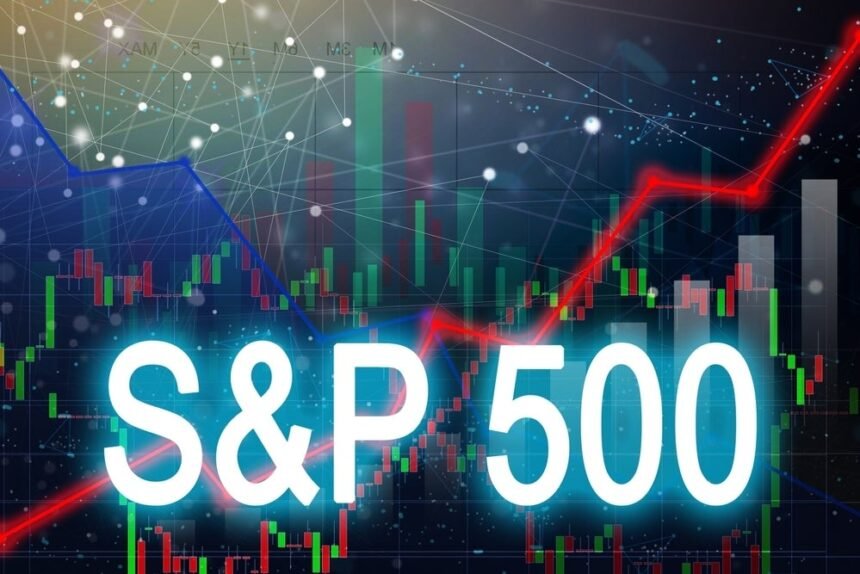The SPDR S&P 500 ETF Trust (SPY) is more than just a popular investment vehicle; it acts as a vital barometer of the broader U.S. stock market and overall economic health. Since SPY tracks the S&P 500 index—comprising 500 of the largest publicly traded U.S. companies—its price movements provide investors with valuable insight into market sentiment, economic trends, and risk appetite. Understanding how SPY price changes correlate with overall market conditions and economic indicators is crucial for smart investing and risk management in 2025 and beyond.
What is SPY and Why Its Price Matters
SPY is an exchange-traded fund that mirrors the performance of the S&P 500 index. Investors gain proportional ownership of the largest U.S. companies across diverse sectors such as technology, healthcare, financials, and consumer goods. Trading on major stock exchanges, SPY offers the liquidity and flexibility of a stock combined with broad market exposure.
The SPY price fluctuates in real-time during market hours, based on the combined performance and investor demand for the 500 underlying stocks. Because the S&P 500 represents roughly 80% of U.S. equity market capitalization, SPY price changes closely indicate large-scale market trends.
Market Breadth and Technical Indicators in SPY Price
Market breadth measures the underlying strength of the stock market by comparing how many stocks advance versus decline, and how many hit new highs versus lows. Broad participation in a rising market generates sustainable SPY price increases, while narrowing breadth—fewer stocks leading the rally—often signals caution.
One critical technical level is the 50-day moving average (DMA). A SPY price consistently above its 50-DMA usually indicates strong market momentum. Recently, the SPY had an historic streak of over 130 consecutive closes above this average, underscoring a sustained bullish trend. However, dipping below this level can presage increased volatility and market weakness.
Another key measure is the New High–Low Accumulation Index, tracking the difference between stocks reaching 52-week highs and lows over a rolling period. When positive, it confirms market strength; when it falls below zero, it warns of deteriorating internals often preceding broader SPY price declines.
Economic Data Influencing SPY Price Movements
SPY price reacts sharply to economic indicators like GDP growth rates, inflation figures, employment data, and consumer confidence indices. Robust data embolden investors, increasing demand and driving SPY prices higher. Conversely, rising inflation or disappointing economic numbers can weigh on prices due to fears of tightening monetary policy or economic slowdown.
Monetary policy decisions by the Federal Reserve heavily influence SPY prices. Interest rate hikes often dampen equity valuations, while dovish signals or rate cuts tend to buoy investor sentiment. Since corporate profits are discounted at prevailing interest rates, changes in rates directly impact SPY valuations.
The Role of Geopolitical and Global Market Events
Unexpected geopolitical developments such as trade negotiations, conflicts, or regulatory changes create uncertainty affecting market sentiment. These events can cause swift moves in SPY price as investors reassess risk and adjust portfolios. Conversely, positive geopolitical news helps boost confidence and supports price increases.
The Interaction of SPY Futures and SPY Price
SPY futures extend trading hours beyond the ETF’s regular session, incorporating overnight news and global market developments into price formation. Futures prices often lead SPY ETF price changes at market open by signaling how investors expect the market to open relative to its prior close.
The near-24-hour liquidity and continuous trading of SPY futures contribute to efficient price discovery, smoothing out volatility and aligning SPY prices with evolving information. Traders use futures contracts to hedge, speculate, and arbitrage, amplifying their influence on SPY price dynamics.
Read More: SPY Stock Price Trends: Understanding Market Dynamics in 2025
Conclusion
SPY price movements offer a consolidated view of the U.S. stock market’s health by reflecting the collective performance of its largest companies. Through technical levels like the 50-day moving average, the breadth of market participation, and the impact of key economic and geopolitical factors, SPY price trends help investors gauge macroeconomic conditions and risk sentiment.
The symbiotic relationship with SPY futures further enhances price discovery and market efficiency, providing important signals for investors navigating a complex global environment.
For deeper insights on SPY ETF and its market role, visit the authoritative guide at Investopedia: SPDR S&P 500 ETF Trust (SPY).









